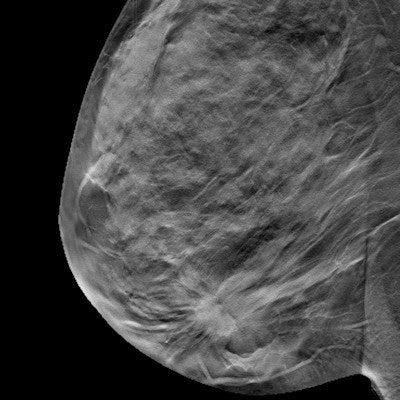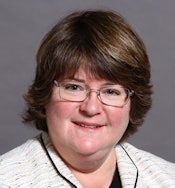
Although digital breast tomosynthesis (DBT) has become increasingly accepted as a clinical tool for both screening and diagnosis of breast cancer, access to the technology remains limited. In fact, although a third of U.S. radiology practices use it, only 11% of those that do are performing all mammograms with tomosynthesis, according to a new study published in the November issue of the Journal of the American College of Radiology.
Why? There are a number of reasons, including the cost of converting a practice's existing mammography units to DBT and the lack of both a current procedural terminology (CPT) code for the exam and published guidelines for DBT's use, researchers from the University of Colorado in Denver wrote. So it's important to investigate how and where DBT is being used in the U.S. to better understand how the technology could be integrated into clinical practice.
 Dr. Lara Hardesty from the University of Colorado.
Dr. Lara Hardesty from the University of Colorado."Knowledge of current use of DBT will inform the development of clinical guidelines for [the technology]," lead author Dr. Lara Hardesty and colleagues wrote (JACR, November 2016, Vol. 13:11, Supplement, pp. R67-R73).
Who's using DBT?
Hardesty's group created an online survey for physician members of the Society of Breast Imaging to explore their use of DBT. In addition to practice characteristics, the survey addressed the following:
- Whether DBT was available in the physician's practice
- Whether it was used for clinical care or research
- How the practice decided whether or not to use DBT with a patient
- The cost of the technology
- If the practice planned to obtain DBT
Of 670 survey respondents, 30% reported using DBT, with 89% of these using the technology clinically. More than half of DBT users had only a single unit, while 6% worked in practices with seven or more DBT devices. Only 11% of those who used DBT performed all mammograms with it.
In terms of practice characteristics, the researchers found that academic practices, those in major metropolitan areas, those with more than three breast imagers, and those with more than seven mammography devices were more prone to report using DBT. For example, out of 188 academic practices, 38.8% had DBT available, compared with 23.5% of 443 private practices. Meanwhile, practices with more than three breast imagers were 2.36 times more likely to report DBT use and those with more than seven mammography units were 3.05 times more likely.
As for how practices decided which patients would undergo DBT, 68.2% made the decision based on whether the exam was screening or diagnostic, while 15.9% used mammographic density and 15.9% used breast cancer risk as determining factors. Of those users who offered DBT based on exam type, Hardesty and colleagues noted the following:
- 39.8% offered the technology to some, but not all, patients undergoing screening mammography.
- 25.2% offered DBT to all patients undergoing screening mammography.
- 18.4% did not offer DBT to screening mammography patients.
- 14.6% offered DBT to all patients undergoing screening mammography at the practice's main office only.
Among those survey participants who said they used DBT clinically, 68.9% did not charge patients an upfront fee. Those practices that did charge for DBT had fees ranging from $25 to $250, with an average of about $70.
Finally, 62.3% of practices that did not currently use DBT had plans to install the technology, with the bulk of them planning to do so within one to two years.
How to boost use?
What's the best way to improve the adoption of DBT and access to the technology? Setting guidelines for clinical use and establishing a reimbursement code would go a long way, Hardesty and colleagues concluded.
"Clinical guidelines for DBT usage would help practices determine whether to adopt DBT and what patients would benefit the most," they wrote. "Standardization of reimbursement for DBT via the adoption of a CPT code would help practitioners made adoption decisions based on science, rather than cost."




















